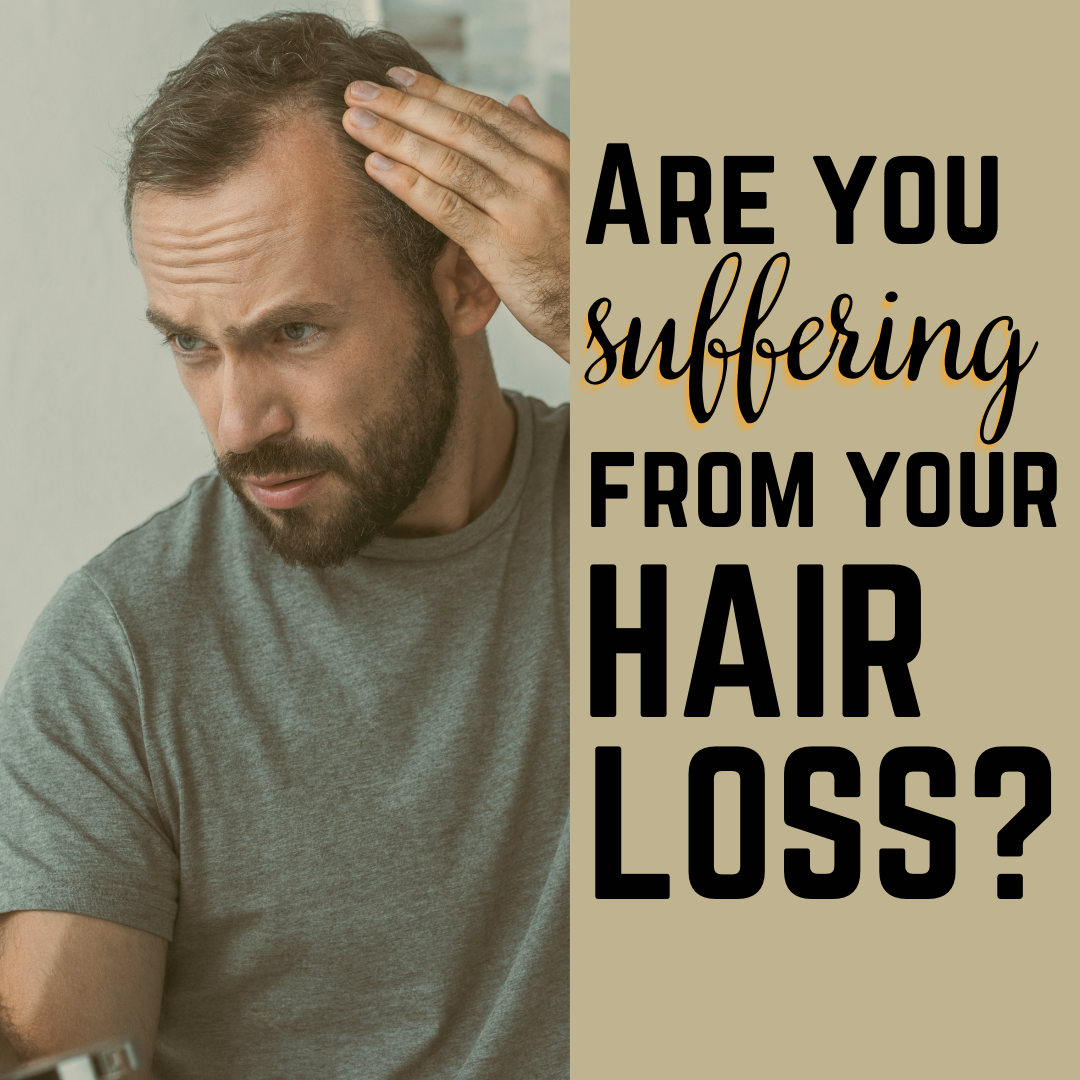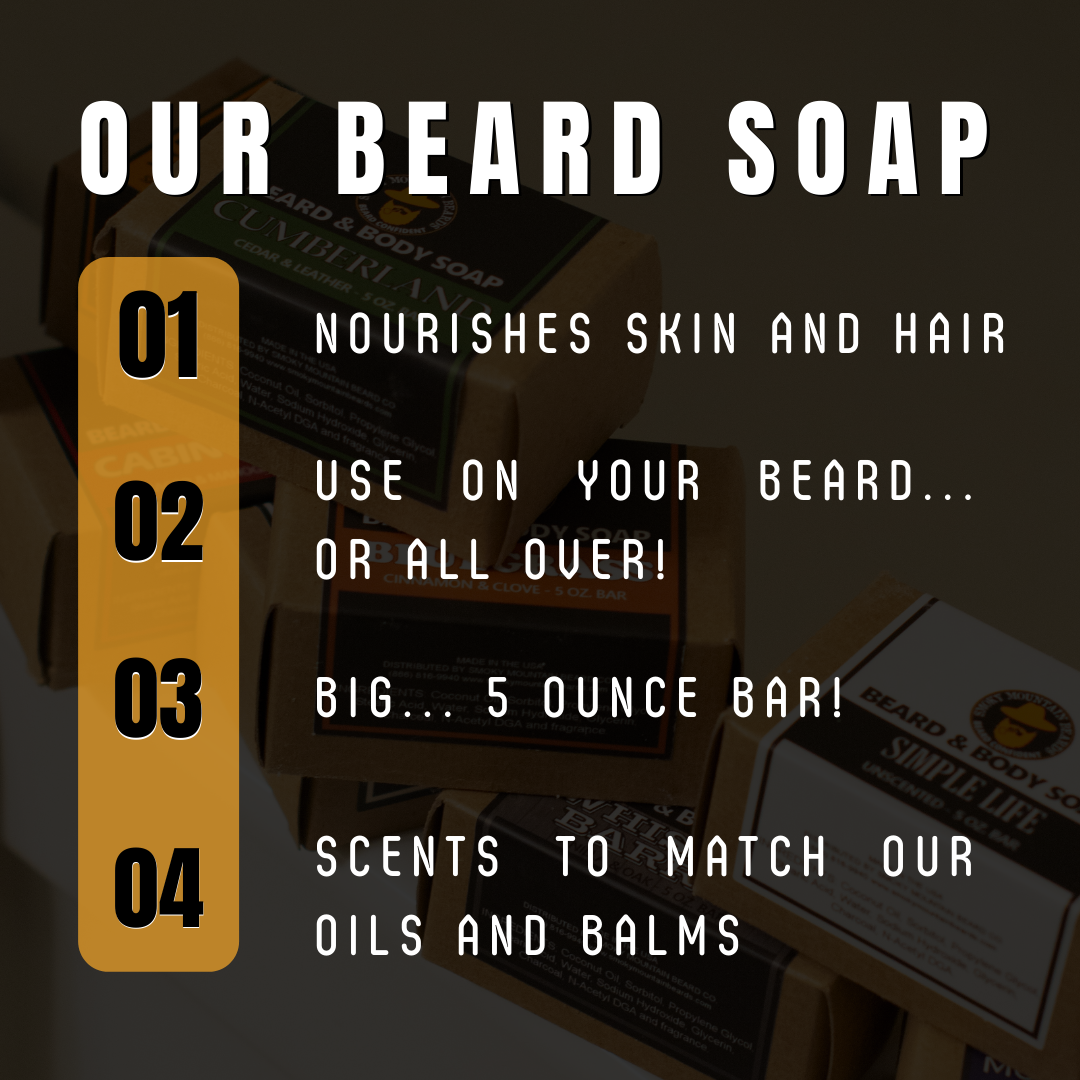Coping with Hair Loss: Is Rogaine Right For You?

Isn’t it kind of ironic? We spend so much time and effort trying to make our beards fuller, longer, and better. All the while, the hair on top of our heads, the stuff we thought we had under control, is slowly but surely thinning.
If you’re losing your hair, don’t feel so bad. It happens to the best of us, even when we’re young. According to the Cleveland Clinic,
“Half of the men in the world experience hair loss by age 50. About 70% of men will lose hair as they get older. And 25% of bald men see first signs of hair loss before age 21.”
Whether you’re in your 20s or your 90s, statistics show that you’re likely to have some issue with hair loss or full-on balding at some point in this journey called life.
Let’s put first things first. There is nothing wrong with rocking a chrome dome. You may know us for promoting Beard Confidence, but we’re all for confidence in general. Confidence has nothing to do with the way you look and everything to do with the way you feel. If you love your hair, we love it for you. If you don’t like the way your hair makes you feel, we want to give you the resources you need to improve your sense of confidence.
If you’re not sure about your hair loss, here are a few not-so-scientific facts to pep you up. Some people think bald men are more attractive than guys with hair. Jason Alexander became a household name starring as Seinfeld’s George Costanza while going bald. Dwayne Johnson was People’s Sexiest Man Alive for 2016, and he’s been bald for most of his career.
Despite all of this evidence, we know that there are some of us out there who aren’t ready to dive into being bald or having thinning hair just yet. That’s ok! Thanks to modern technology. There are plenty of solutions. This is the first edition of our series about combatting hair loss.
What Is Rogaine?
Rogaine is an oldie but goodie in the hair loss market. You may also see Rogaine and similar products referred to as minoxidil. Minoxidil is the drug that makes Rogaine work. Rogaine is a topical solution that usually comes in foam and liquid forms.
Rogaine is made specifically to treat male pattern baldness, also known as androgenetic alopecia. The most common culprits for male pattern baldness are hormones and genetics. Men who have androgenetic alopecia lose hair in a distinct M-shaped pattern that starts with a receding hairline. If your hair loss has a different root cause, Rogaine may not be effective.
For some, Rogaine is a wonder drug. For others, it doesn’t work at all. Rogaine claims to help thinning hair start to grow back full again. However, this is not a quick fix. The process can take up to three months to start seeing results. To keep on having good results, you may need to make Rogaine a long-term component of your grooming routine. For some people, Rogaine only stops hair loss, but it does not help with growth. Just like most other things that are supposed to help us look better, results with Rogaine may vary greatly from person to person.
Rogaine works because it makes the blood vessels dilate. Scientists haven’t nailed down the exact reason that Rogaine makes hair grow or stops hair loss. One hypothesis is that dilated blood vessels at the hair follicle allow the follicle to get the nutrients and blood flow it needs to start growing again.
How Does Rogaine Work?
Rogaine comes in different percentage strengths based on the percentage of minoxidil in the solution. Most people start with 2%. Whether you’re using the foam or liquid version, you use it the same way.
Each time you use Rogaine, inspect your scalp to make sure that the skin is intact. You can’t apply Rogaine on top of cuts, scrapes, or sunburn. It’s also a good idea to delay treatment if the skin is red or irritated in any way.
Next, wash and dry your hair. Part your hair for easy access to the bald section of your scalp. The box will tell you exactly how much to use, but apply a generous amount of Rogaine directly to the bald part of your scalp before working it in. Be sure to direct Rogaine to the bald scalp alone. Do not rub it into your hair.
If you are going to use any other stylers or moisturizers on your hair, be sure that the Rogaine is completely dry before you proceed with the rest of your hair care routine. When you’re done applying Rogaine, thoroughly wash and dry your hands.
What Are the Risks of Rogaine?
Before people were rubbing it in their scalp, Rogaine was actually taken by mouth as a treatment for high blood pressure. The drug successfully treated the high blood pressure, but it also made some of the patients grow hair all over their bodies. That’s when it was discovered that Rogaine helps you grow hair.
Rogaine is very safe topically as long as you use it properly. If you use Rogaine on a scalp with open cuts, it can enter the bloodstream, and it will start to act as a high blood pressure medication. It almost goes without saying, but that is a very unsafe situation because blood pressure can become dangerously low.
It’s a pretty rare allergy, but some people are allergic to Rogaine. If you’re one of those people, you should immediately discontinue use. Redness or itchiness on the scalp is a sign of a reaction. People with severe allergies can even go into anaphylactic shock.
Another risk of Rogaine is getting it on other parts of your body. Rogaine is a hair growth treatment, so it can make hair grow anywhere it happens to land. That is why it is so important to apply it to a completely dry scalp, let it dry before doing anything else to your head, and be vigilant about handwashing after treatment.
Rogaine is one of the most tried and true methods for combatting male pattern baldness. It’s a low-cost, low-risk option. What about hair loss that’s not associated with male pattern baldness? Stay tuned for the next edition of our hair loss series.



